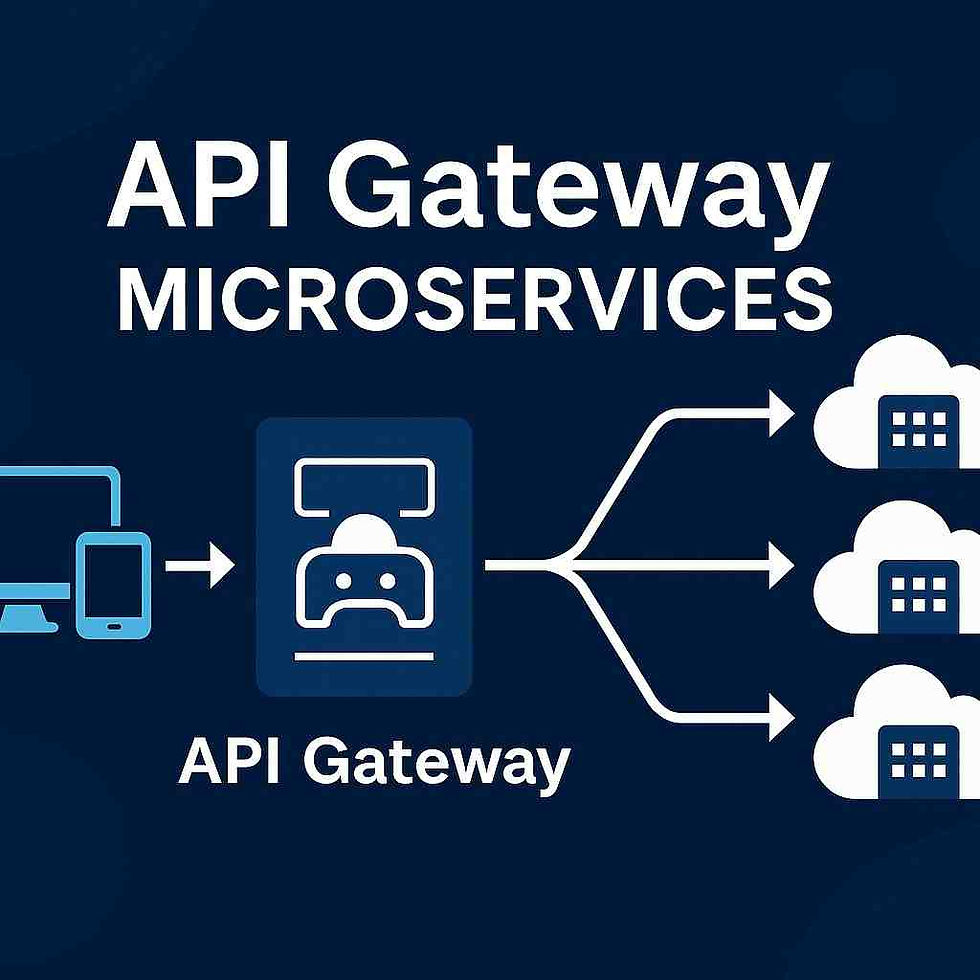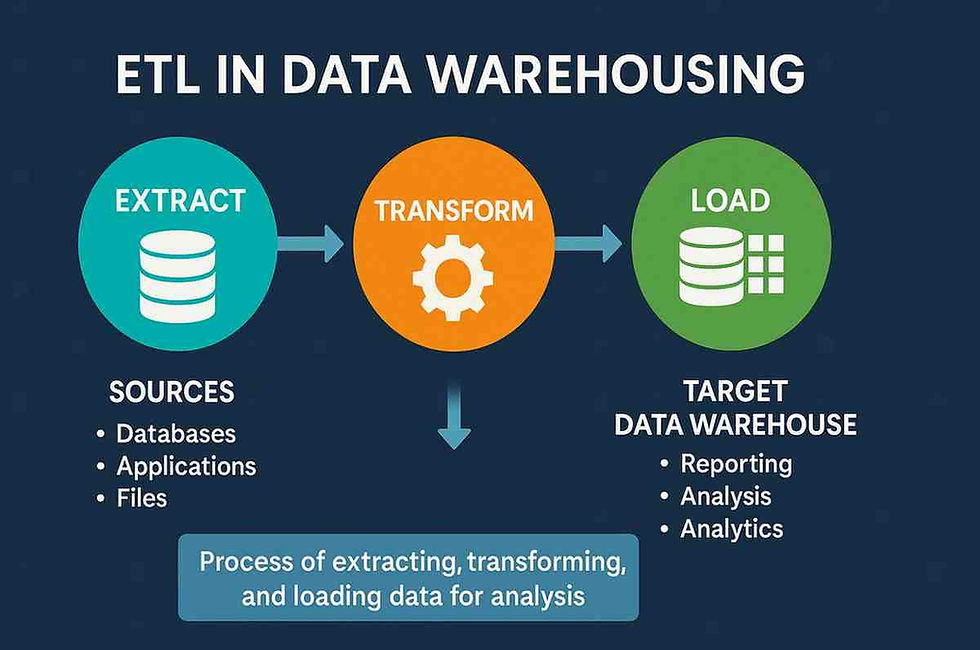Master Consumer Driven Contract Testing: A Complete Guide
- Gunashree RS
- Sep 26, 2024
- 8 min read
Introduction: What is Consumer Driven Contract Testing?
In modern software development, microservices, APIs, and third-party integrations are increasingly becoming the backbone of many applications. To ensure the smooth collaboration between these interconnected systems, maintaining compatibility between consumers and providers is essential. This is where Consumer Driven Contract Testing comes in.
Consumer driven contract testing (CDCT) ensures that a service provider (like an API) fulfills the expectations and requirements of its consumers (like another service or client application). It ensures that as long as the provider adheres to the contract, no breaking changes are introduced that could disrupt the consumer’s functionality.
In this guide, we will explore what consumer driven contract testing is, how it works, its benefits, the tools available, and how it fits into modern software development workflows.

1. Understanding Consumer Driven Contract Testing (CDCT)
At its core, consumer driven contract testing is a type of contract testing where the focus is on the consumer's expectations. It tests whether the provider (API or service) meets the specific needs or contract laid out by the consumer.
A contract here refers to the set of interactions between the consumer and the provider, including expected requests and responses. If the provider returns responses that deviate from the consumer’s expectations, it signals an incompatibility that could break the system.
For example, when a front-end application requests an API, it expects specific data in return, such as JSON in a particular format. If the API were to change its response format, the front-end application would break. Consumer driven contract testing helps catch these issues before they make it to production.
2. Why is Consumer Driven Contract Testing Important?
CDCT plays a critical role in maintaining the stability and compatibility of systems. With the increasing trend towards microservices architecture, applications are becoming more modular, relying heavily on communication between independent services. Consumer driven contract testing ensures that changes in one service don't unintentionally break dependent services.
Some key reasons why CDCT is important include:
Preventing Breakages in Distributed Systems: As applications scale and involve multiple services, CDCT ensures that changes in one service do not cause unexpected failures in others.
Facilitating Agile Development: By enabling fast feedback loops, CDCT allows teams to make updates to services without worrying about breaking dependencies, thus accelerating development.
Ensuring Backward Compatibility: It ensures that new versions of an API or service remain backward compatible with existing consumers, reducing the chances of regression issues.
Improving Collaboration Between Teams: CDCT promotes clear communication between teams responsible for different services, as each service is tested against the actual expectations of its consumers.
3. How Does Consumer Driven Contract Testing Work?
CDCT is primarily achieved through two approaches: explicit contracts and implicit contracts. Let's take a detailed look at both.
Explicit Contracts
In this approach, the consumer's expectations are serialized into a contract file, which is then verified against the provider. This verification is done during the provider's build process to ensure no breaking changes are introduced.
Here’s a simplified breakdown of how explicit contract testing works:
Contract Creation: The consumer generates a contract file containing expected requests and responses while running its automated tests.
Contract Verification: The provider then verifies this contract by sending requests from the contract and comparing the responses with the expected ones.
Provider’s Feedback: If the provider's responses match the expectations, the contract is validated. If there are mismatches, the provider needs to fix the issues before releasing changes.
Example Scenario:
A front-end web application (the consumer) makes API requests to a back-end service (the provider). It expects a list of users in JSON format. The contract is generated with these expectations, and when the back-end service runs its tests, it verifies that it can still provide data in the expected format.
Key Tool:
Pact is a widely used tool for generating explicit contracts. Pact uses a test double to capture requests and expected responses, creating a contract file that is then used by the provider for verification.
Implicit Contracts
When explicit contracts are not feasible, implicit contracts are used. In this approach, a test harness ensures that the real provider behaves the same way as a provider test double used during consumer tests.
How it works:
The consumer tests run against a provider test double, which acts like the actual provider.
A test harness checks if the real provider and the test double behave identically.
If there are differences between the two, it indicates an incompatibility between the consumer's expectations and the provider’s responses.
When to Use Implicit Contracts:
When you cannot modify the provider’s build process to include contract verification.
When testing against a public API or open-source library where control over the provider's test process is limited.
4. Key Benefits of Consumer Driven Contract Testing
1. Early Detection of Breaking Changes:CDCT identifies breaking changes early in the development process by testing against the consumer's expectations before changes are deployed to production.
2. Better Confidence in Continuous Integration (CI):By incorporating CDCT into your CI pipeline, you gain confidence that your services will continue to work seamlessly even as updates are made to dependent services.
3. Faster Feedback Loops:When integrated into automated testing pipelines, CDCT provides immediate feedback on whether a provider’s changes affect consumers, speeding up the development and deployment process.
4. Improved Communication:With CDCT, both consumer and provider teams have a clear understanding of the expectations, leading to improved collaboration and reduced ambiguity between service teams.
5. Compatibility Assurance in Microservices Architecture:As microservices communicate via APIs, CDCT ensures that updates to one service don’t break the entire system, especially when several services depend on each other.
5. Implementing Consumer Driven Contract Testing in Your Workflow
To implement consumer driven contract testing, follow these steps:
Step 1: Define Contracts from the Consumer Side
Start by defining the interactions that consumers have with providers. For HTTP APIs, this includes specifying the requests that the consumer will make and the responses it expects in return. These interactions are recorded in a contract file.
Step 2: Automate Contract Generation
Automate the process of contract generation within the consumer's automated test suite. Tools like Pact make this easy by recording the interactions during test execution and writing them to a contract file.
Step 3: Integrate Contract Verification in the Provider’s CI Pipeline
Once the contract is generated, integrate its verification into the provider's CI pipeline. This ensures that any changes to the provider are validated against the consumer’s expectations before they are released.
Step 4: Monitor and Update Contracts
Keep contracts up-to-date as the consumer evolves. If the consumer’s expectations change (for example, requesting additional data fields from the provider), update the contract accordingly and ensure that the provider verifies the new expectations.
Step 5: Scale to Multi-Service Environments
In large environments with multiple microservices, ensure that each service verifies its contracts with all of its consumers. This ensures that changes in one service don’t break other services that depend on it.
6. Tools for Consumer Driven Contract Testing
Several tools can help you implement consumer driven contract testing.
Here are some of the most popular options:
Pact:Pact is a widely-used consumer driven contract testing tool that generates explicit contracts between consumers and providers.
Spring Cloud Contract:This tool helps with contract testing in Java applications and supports both consumer and provider-driven contracts.
Postman:While primarily known for API testing, Postman can also be used for setting up contract tests by verifying API interactions against defined expectations.
WireMock:WireMock is a flexible tool for mocking HTTP services. It can be used to create test doubles for providers when performing implicit contract testing.
Hoverfly:Hoverfly is an API simulation tool that can be used to capture and test HTTP interactions, ensuring compatibility between consumers and providers.
7. Best Practices for Consumer Driven Contract Testing
1. Keep Contracts Small and Focused:Ensure that contracts are specific to the consumer’s needs and do not contain unnecessary data. This keeps the contract testing manageable and focused.
2. Run Contract Tests as Part of the Build Process:Integrate contract tests into the CI/CD pipeline so that contract violations are caught early before the code is merged or deployed.
3. Use Semantic Versioning for API Changes:When making changes to a provider API, use semantic versioning to indicate whether the change is backward-compatible or a breaking change. Consumers can then choose when to upgrade.
4. Maintain Contracts as Part of Version Control:Keep contract files in version control along with the consumer’s codebase, ensuring that they are always in sync with the consumer’s requirements.
5. Communicate Clearly with Providers:Regularly communicate with provider teams to ensure that they are aware of the expectations outlined in the contracts and any changes made to the consumer’s requirements.
Conclusion
Consumer driven contract testing is a powerful technique that ensures compatibility between service consumers and providers. By focusing on the consumer’s needs, CDCT allows for fast feedback, preventing breaking changes from being introduced into the system. Whether you’re working with APIs, microservices, or third-party integrations, incorporating consumer driven contract testing into your development workflow will increase system reliability and ensure a smooth user experience.
Key Takeaways:
Consumer Driven Contract Testing (CDCT) ensures compatibility between services by focusing on consumer expectations.
Explicit and implicit contracts are the two primary approaches to implementing CDCT.
Tools like Pact and Spring Cloud Contract help automate and streamline the CDCT process.
CDCT improves communication between teams and catches breaking changes early in the development cycle.
CDCT is especially beneficial in microservices and distributed system environments.
Integrating CDCT into CI/CD pipelines provides faster feedback and ensures backward compatibility.
Following best practices, such as maintaining small contracts and using version control, ensures efficient and effective CDCT.
Frequently Asked Questions (FAQs)
1. What is consumer driven contract testing?
Consumer driven contract testing is a testing approach that ensures a service provider meets the expectations and needs of its consumers, by validating request-response interactions through defined contracts.
2. How does consumer driven contract testing differ from traditional testing?
CDCT focuses on the specific interactions between consumers and providers, ensuring that changes in the provider do not break the consumer’s expectations, whereas traditional testing might not specifically test these interactions.
3. What tools can I use for consumer driven contract testing?
Popular tools for CDCT include Pact, Spring Cloud Contract, and Postman for verifying API interactions.
4. What are explicit contracts?
Explicit contracts are serialized files generated by the consumer that outline expected interactions (requests and responses) with the provider. These contracts are then verified by the provider.
5. What is the role of a test harness in CDCT?
A test harness is used in implicit contracts to enforce the behavior of a real provider, ensuring it matches the provider test double used in consumer tests.
6. Can CDCT be used in microservices architecture?
Yes, CDCT is highly beneficial in microservices architectures, as it ensures smooth communication and compatibility between independently developed services.
7. How does CDCT improve collaboration between teams?
By explicitly defining the expectations between consumers and providers, CDCT reduces ambiguity and fosters better communication between different service teams.
8. What is the best practice for maintaining contracts in CDCT?
Contracts should be version-controlled and kept in sync with the consumer’s codebase to ensure they accurately reflect the consumer’s expectations.




Comments